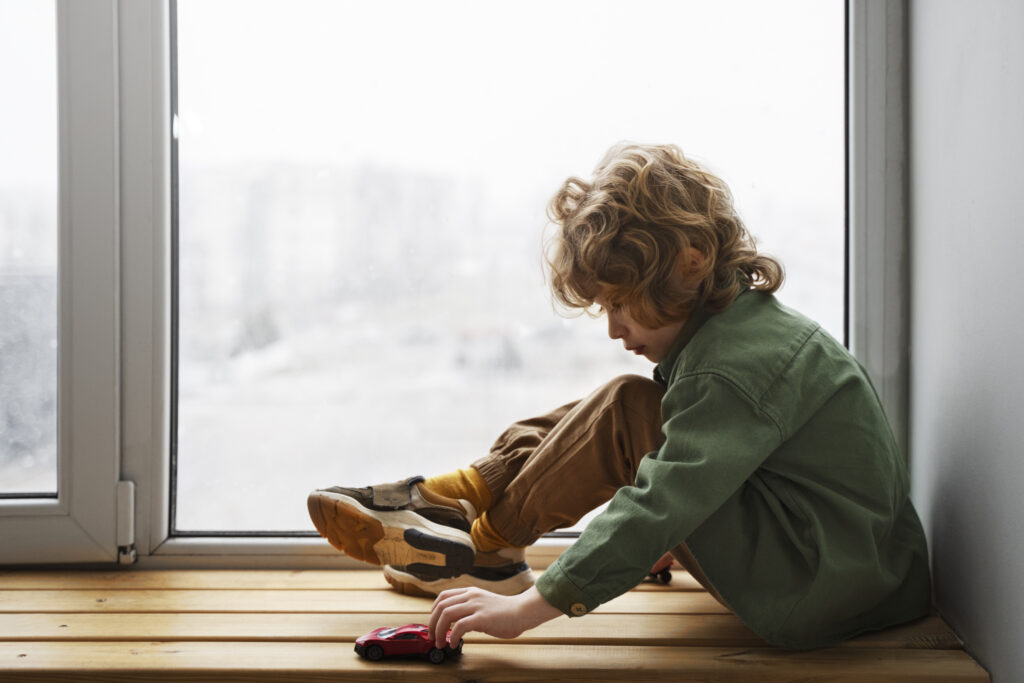When a child or young person is placed with a foster family, there are many things to consider, however the most important will be to understand their emotional landscape. What might they need to feel welcome, safe, cared for, as well as creating a positive bridge between family home and foster home?
When a child enters foster care, they may feel:
- Confused or scared about what’s happening
- Worried about their birth family or feel guilty for being away
- Anxious about being accepted or fitting in
- Concerned about how others will perceive them
- Unsure about their future or how long they’ll stay
Recognising and validating these emotions helps the child feel seen and heard from the very beginning. As a foster carer, to be able to do this, you need to keep in the forefront of your mind that you should value, respect, encourage and appreciate the children that you care for. Here are some things to consider:
Welcoming a Child on Arrival: Emotional & Practical Steps
⮚ Emotional Welcome
- Warm greeting: Speak gently, maintain open body language, and be mindful of their emotional state.
- Acknowledge their situation: “You might be feeling a lot of things right now – and that’s okay.”
- Reassure them: Explain simply what to expect in the first day or two.
⮚ Practical Welcome Kit
- Age-appropriate toiletry pack: Ensures they don’t feel like a guest or outsider.
- Teddy, blanket, or soft item: Comfort through touch can ease early anxiety.
- Personalised welcome note: Something like: “Hi Jamie, we’re really glad you’re here.”
- Room tailored to them: Add a choice of duvet covers or posters if possible.
- Family Welcome Book: Photos, names, pets, routines – something to help orient them.
- Snacks/meal choice: Offer familiar foods or allow them to choose.
⮚ Sense of Belonging
- Photo frames: Support their connection with family. Help them display their own photos or drawings.
- Let them help unpack: So that they can begin claiming their space.
- Ask permission: Before entering their room or moving their belongings, build trust and respect.
Ongoing Support in the First Days and Weeks

⮚ Open Communication
- Let them know: “You can ask me anything or talk when you’re ready.”
- Be patient. Silence or resistance is part of the process of change.
⮚ Routine and Structure
- Clear, simple routines reduce anxiety.
- Use visual schedules for younger children or those with neurodiverse needs.
⮚ Personal Space and Privacy
- Allow them quiet time. Let them know it’s okay to close their door or have alone time.
- Respect their belongings, even if they only have a few items.
⮚ Inclusion in Decisions
- Let them choose their cereal, what to wear, or which movie to watch.
- Ask: “What would you like to do this weekend?”
⮚ Help with:
- School transitions – introductions to teachers, offering a quiet place for homework.
- Friendships – enabling playdates or participation in activities.
- Normal experiences – like going shopping, cooking together, and celebrating birthdays.
Building Bridges With Other Children in the Home
- Prepare birth/foster children ahead of time with age-appropriate discussions.
- Promote inclusion but avoid forced interaction – let relationships develop naturally.
- Encourage shared activities, but also ensure the new child has individual time and space.
Supporting Identity, Interests, and Uniqueness
- Ask about their hobbies, dreams, or favourite things.
- Offer opportunities for them to express themselves (art, music, sports).
- Celebrate small wins or talents: “I saw how kind you were to the dog—that was lovely.”
You’re Not Alone
- Supervising Social Worker: Check in regularly. They’re a key support for both you and the child.
- Foster Carers Handbook: Keep it handy for guidance.
- Children’s Handbooks: Encourage the child to look through theirs when ready – it helps them understand their rights and to whom they can talk.
Conversation Starters – Get That Conversation Going and Connections Building
Here’s a helpful list of conversation starters you can use with children and young people when they first arrive in your foster home. They’re gentle, non-intrusive, and designed to help build trust, open communication, and a sense of belonging, without putting pressure on them to share more than they’re ready to.
⮚ Getting to Know You
- “Would you like me to show you around the house?”
- “Do you want to pick which side of the room your things go on?”
- “What would help make your room feel more like yours?”
- “Is there anything special you’d like to do today or tomorrow?”
⮚ Food & Comfort
- “What’s your favourite meal or snack?”
- “Is there anything you don’t like to eat?”
- “Would you like to help me cook something sometime?”
- “Do you prefer eating with others or on your own for now?”
⮚ Hobbies & Interests
- “What kinds of things do you like to do for fun?”
- “Do you like music, drawing, games, or sports?”
- “Have you seen any good shows or movies lately?”
- “If you could try any activity, what would it be?”
⮚ Routines & Daily Life
- “What time do you usually like to wake up or go to bed?”
- “Is there a bedtime routine that helps you feel relaxed?”
- “Would you like a night light, or the door left open?”
- “Do you have a favourite thing to do after school?”
⮚ Feelings & Reassurance (Gentle Prompts)
- “It’s okay to feel however you’re feeling right now.”
- “You don’t have to talk if you don’t feel like it – I’m here when you’re ready.”
- “Is there anything that makes you feel safe or calm when you’re upset?”
- “Would it help to write things down, draw, or talk?”
⮚ Belonging & Friendships
- “Is there anyone you’d like to stay in touch with?”
- “Would you like to meet the other people in the house, or take your time?”
- “What helps you feel like you fit in somewhere?”
- “Do you have any pets or people you miss?”
⮚ Empowering & Respecting
- “If there’s anything you don’t like or don’t want, just tell me – it’s totally okay.”
- “Would you like me to knock before coming into your room?”
- “You can always ask questions – even about the little things.”
- “Is there anything you want to ask about living here or what happens next?”
 You can also speak with your Supervising Social Worker to get more information and advice. We also have some links below that you may find useful:
You can also speak with your Supervising Social Worker to get more information and advice. We also have some links below that you may find useful:
https://ukfostering.org.uk/welcoming-foster-child-home-foster-carer-family-profiles/
https://ukfostering.org.uk/welcoming-foster-child-home-bedrooms-foster-children/
https://ukfostering.org.uk/welcoming-foster-child-home-first-days/
https://ukfostering.org.uk/foster-children-need-bedroom/
By Lynsey Dobbs, Senior Recruitment Officer
